The Samsung Galaxy Tab S2 Review
by Brandon Chester on October 15, 2015 8:00 AM ESTSystem Performance: GPU
While CPU performance characterizes one part of an SoC, GPU performance characterizes another. Tablets have long been a form factor where GPU performance can be pushed much further than in a phone due to the larger chassis of a tablet having far fewer size and thermal limitations. While some tablets elect to use specialized SoCs with more powerful GPU hardware than smartphones, the Tab S2 uses the same ARM Mali T760 GPU used in the Galaxy Note 4 Exynos.
To characterize the Tab S2's GPU performance I've run it through our standard GPU benchmarks. First up is 3DMark which actually has both a CPU and GPU component, followed by BaseMark X and GFXBench which focus more strongly on the GPU alone.
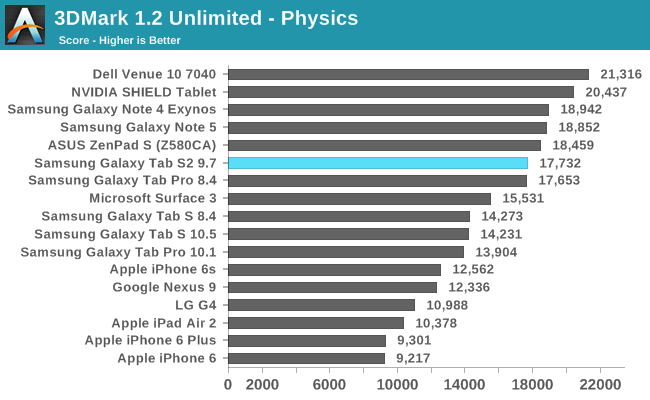


In 3DMark all of the Tab S2's scores are roughly equivalent to the Galaxy Note 4 Exynos which is not unexpected. Unfortunately, it's clear that Mali T760 can't keep up with NVIDIA's mobile Kepler implementation or Apple's custom 8 core PowerVR 6XT part. While the Nexus 9 and iPad Air 2 both fall short in the physics sub test their scores in the graphics sub test are in a completely different league than the Tab S2.
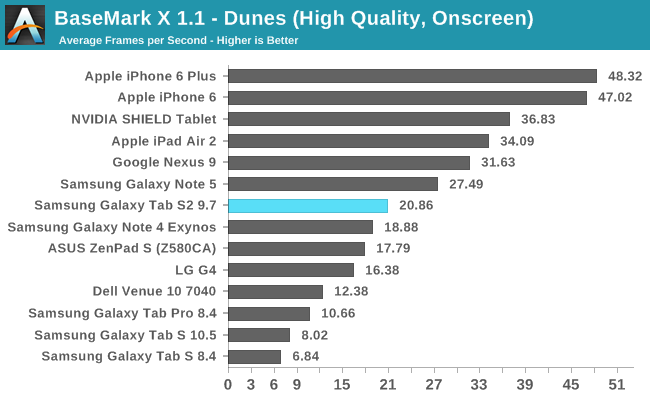
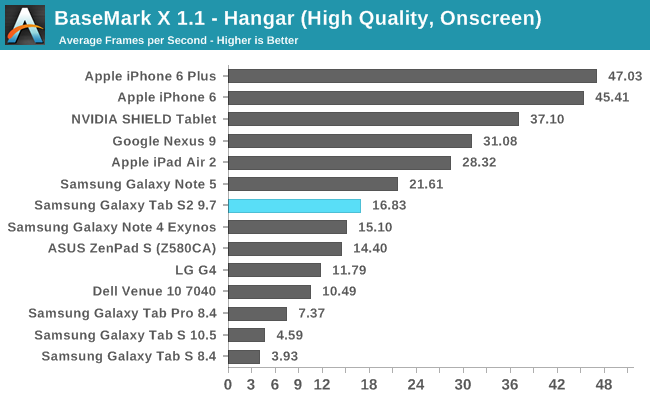
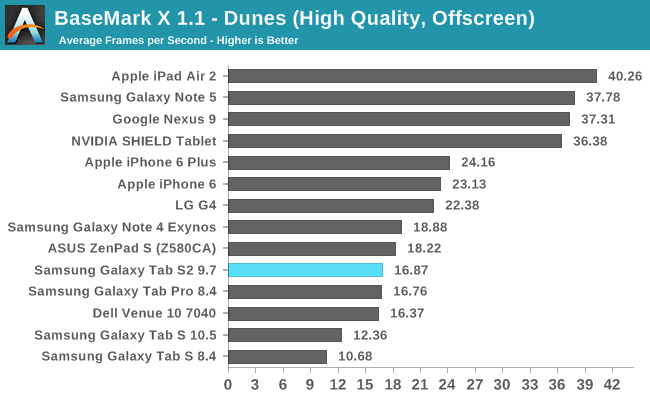
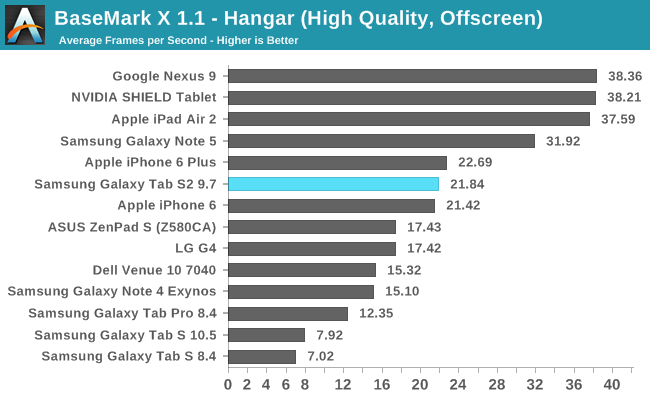
In BaseMark X we again see the Tab S2 sitting fairly far behind the iPad Air 2 and Nexus 9. If I was considering the Tab S2 8.0 which retails for $399 these results would be perfectly fine, as the major competition at that price point is the iPad Mini 4 which has Apple A8 SoC. At $499 the GPU performance simply isn't competitive, and it outlines the issues with trying to make one SoC fit many different devices.
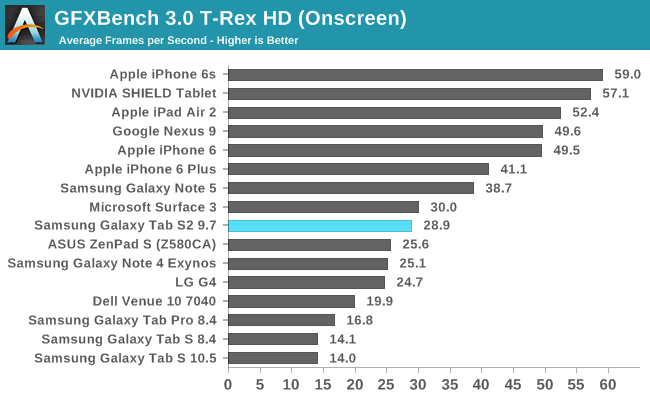
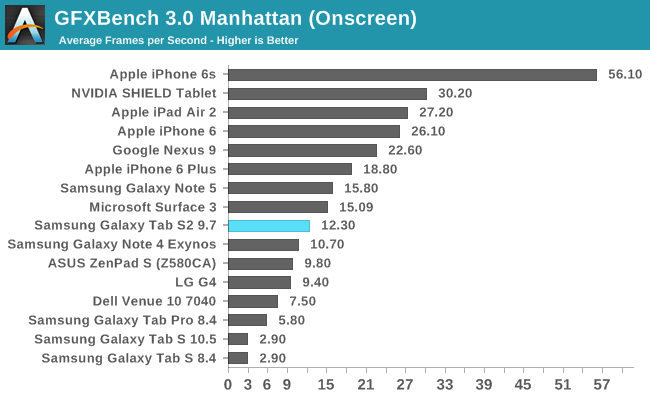
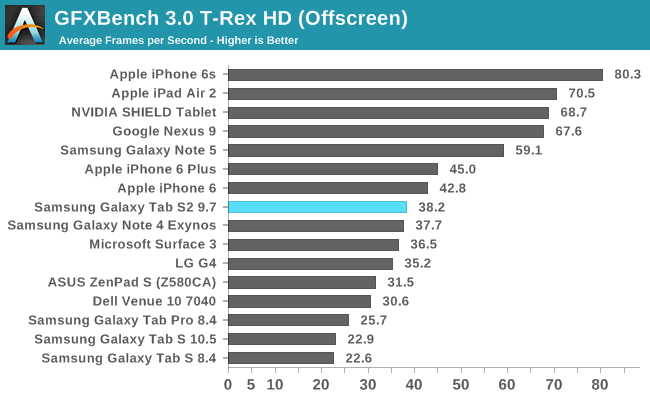
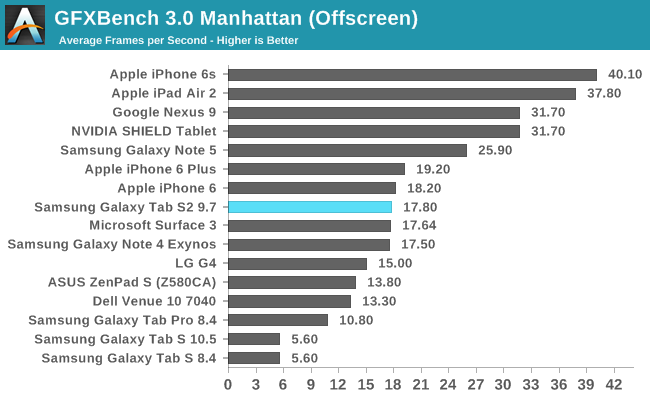
In GFXBench the Tab S2 is in the same situation as the previous tests. GPU performance is right around where the Galaxy Note 4 and iPhone 6 are, and it's just not good enough to justify the $499 price tag of the Tab S2.
Like I said on the last page, the fact that most Android tablet OEMs aren't providing CPU and GPU performance that is anywhere near competitive with the iPad Air 2 is a very bad thing for the entire tablet industry. Apple decided to not even update the iPad Air 2 despite it being a year old, and it's hard to blame them when nobody is close to them as far as performance is concerned. Having various manufacturers pushing each other to constantly improve is one of the primary drivers behind the advancements made in the mobile space, and I'm concerned that this no longer exists in the tablet market as the only tablets that come close are ones with NVIDIA's SoCs which also happen to be tablets that don't ship in very great volume.
System Performance: NAND
While it's still not advertised in specifications like on laptops, a mobile device's internal storage is now being recognized as a highly relevant part of overall system performance. Internal eMMC NAND solutions have traditionally had very poor storage performance, and different vendors have done different things to address the problem.
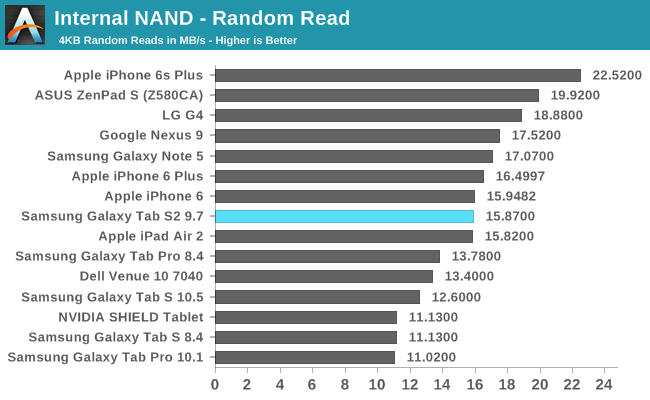
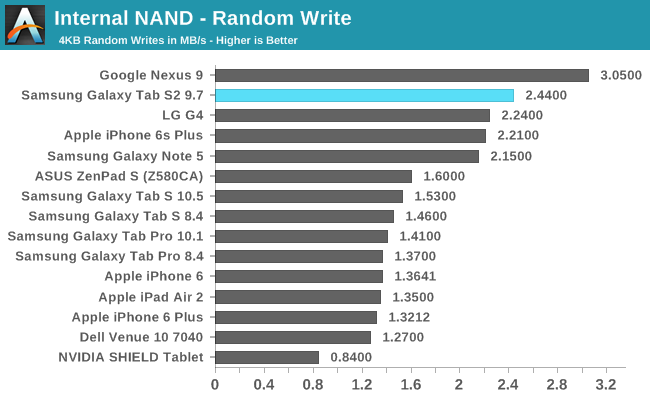
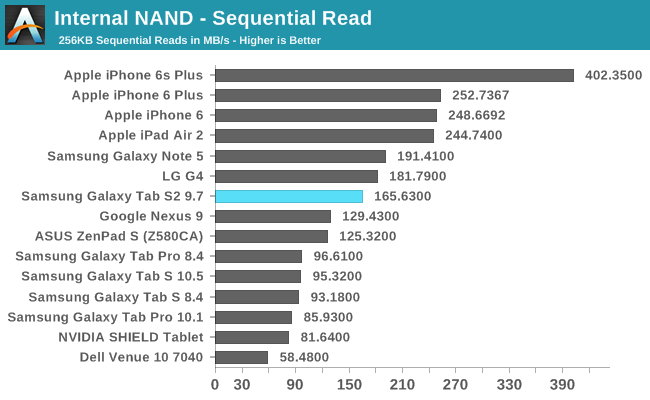
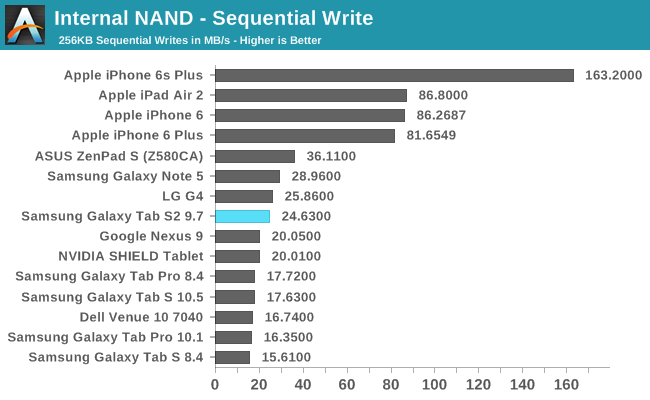
Both sets of read and write results are right around what you'd expect. Random writes in particular are very fast, and all the other results are fairly similar to those of the Galaxy Note 5. I don't expect internal NAND speeds will be a bottleneck on the Galaxy Tab S2, which is expected and fitting of a flagship tablet.










162 Comments
View All Comments
KoolAidMan1 - Saturday, October 17, 2015 - link
Samsung is just a foundry for Apple's designs. Just because they produce Apple's SoCs doesn't mean that they are entitled to using them in their own devices.psychobriggsy - Thursday, October 15, 2015 - link
Thanks for the review. A pretty poor showing from Samsung, for the price they want.All the review has done is show how worthwhile getting an iPad Air is.
cknobman - Thursday, October 15, 2015 - link
Agreed, not sure how this gets a good review.Horribly priced this needs to be <= $300.
FlyBri - Thursday, October 15, 2015 - link
@cknobman Totally agree. I'm really hoping Samung releases a higher end tablet soon with much better performance and battery life. The Tab S2 is fine, but comparing the specs and price to an Air 2, it has to much less than what Samsung wants.ummduh - Thursday, October 15, 2015 - link
I don't understand why Samsung continues to do this. They have the capability to make great hardware, and they do with their phones. But their tablets are just all around terrible. OK, well, they'd be great if they were sub $200. Seems like every tablet they've made has had some sort of huge fatal flaw, and some of them had multiple fatal flaws. I don't think I've ever seen Samsung make a compelling tablet.zodiacfml - Thursday, October 15, 2015 - link
It's all good, the performance and battery life but the price. An expensive picture frame and reader.Der2 - Thursday, October 15, 2015 - link
DAT nichijou episodes tho. I better see OPM on the next phone/tablet review haha. Good review as always Brandon.RGagne1975 - Thursday, October 15, 2015 - link
Looks like my Nexus 9 is still worth keeping. I guess I will have to wait for the review of the next Nexus tablet to see if I will want to upgrade or not.R. Hunt - Thursday, October 15, 2015 - link
I have to disagree with the reviewer about the quality of the screen. Text on the iPad Air 2 looks noticeably sharper than on the Tab S2 9.7, despite having the same ppi. I'm not sure if it's the screen itself or the rendering done by the OS has any influence on it, but I wasn't happy about it at all.The review also claims the original Tab S 10.5 had a pixel density of 320 ppi. Pretty sure that's not right and it was below 290 ppi.
Brandon Chester - Thursday, October 15, 2015 - link
Android's font rendering is a completely different topic, but it's definitely not the display itself. If you use both platforms regularly you sort of become accommodated to the differences, not unlike how one eventually gets used to how Windows and OS X render fonts completely differently.As for the PPI, you're correct. I must have messed up my math pretty badly there.